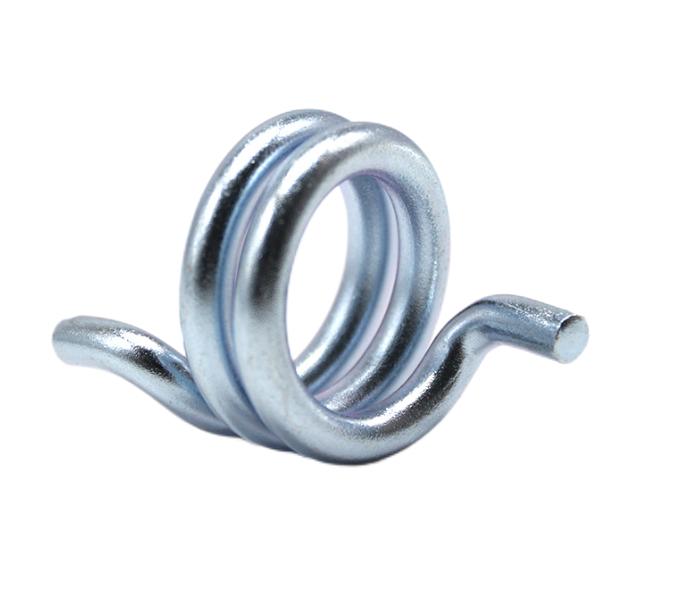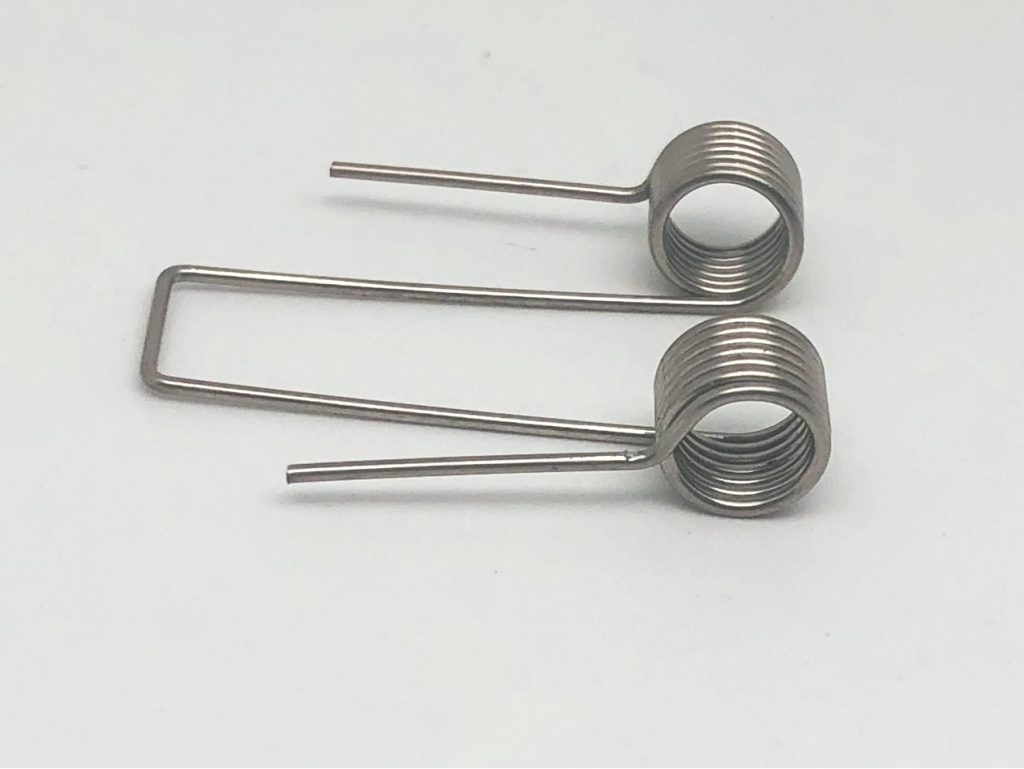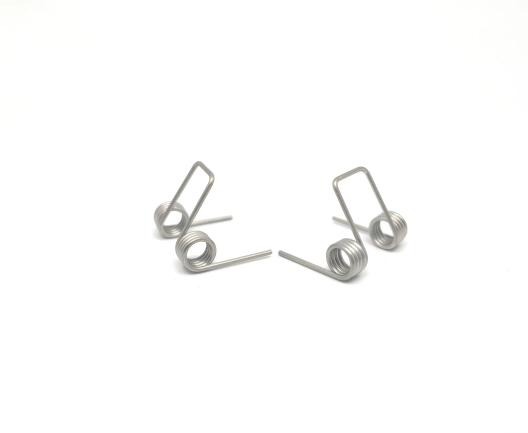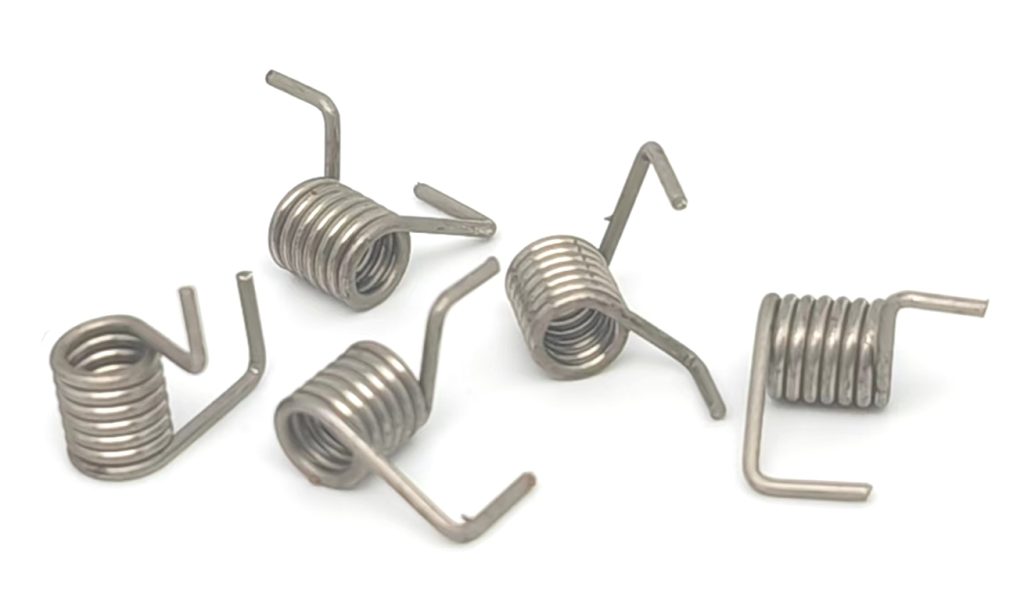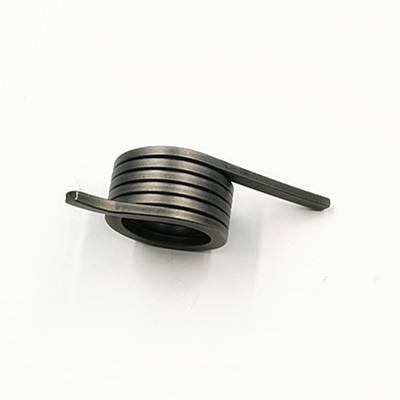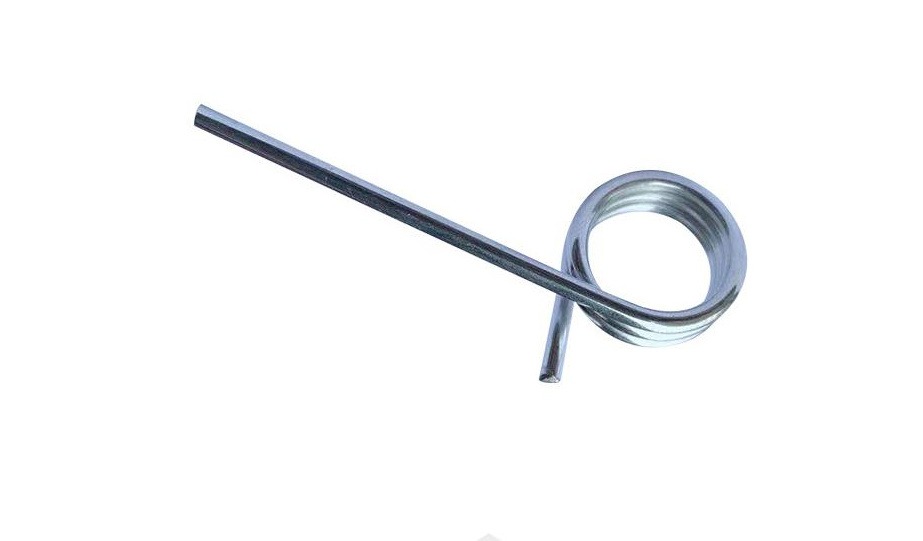Crafting a Torsion Spring: The Art of Material Selection
Torsion springs may not be as well-known as their more popular counterparts, like compression and extension springs, but they play an equally important role in the world of engineering and manufacturing. These springs are essential components in various mechanical systems, serving as the backbone of machinery and devices that require rotational force. In this article, we will explore the fundamentals of torsion springs, delve into the materials used to craft them and discuss the critical properties that influence their performance.
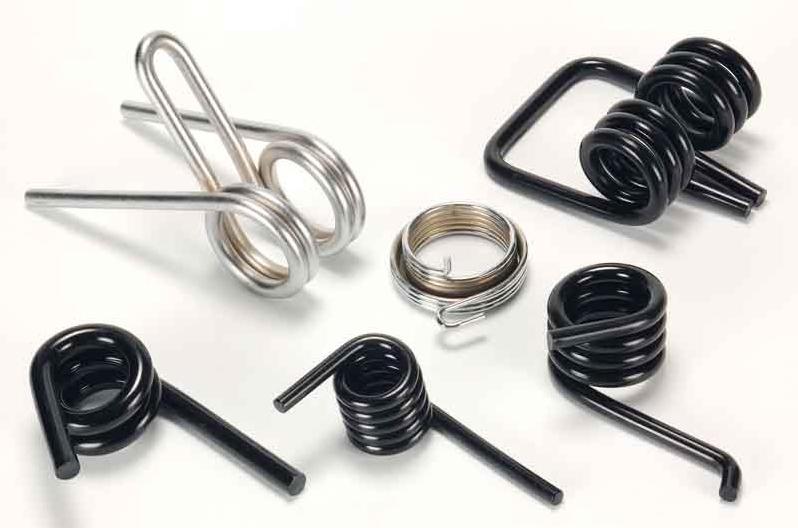
What is a Torsion Spring?
A torsion spring is a helical spring designed to exert torque or rotational force when twisted around its axis. This type of spring operates by storing mechanical energy as it’s wound or twisted, and it releases this energy when the torque is released. Torsion springs are used to create torque or rotation in many different applications, making them indispensable in the world of engineering.
How Does a Torsion Spring Work?
The working principle of a torsion spring is straightforward. When an external force is applied, causing the spring to twist or rotate, it stores potential energy. This energy is proportional to the amount of twist or rotation. When the external force is removed or reduced, the spring tries to return to its original position, releasing the stored energy and generating torque in the process.
Where is a Torsion Spring Used?
Torsion springs find applications in a wide range of industries. Some common examples include:
- Automotive Industry: Torsion springs can be found in vehicle doors, hoods, and trunks. They help in counterbalancing the weight of these components.
- Aerospace: They are used in aircraft controls and landing gear mechanisms.
- Manufacturing: Torsion springs are used in a variety of manufacturing equipment, including stamping presses and CNC machines.
- Medical Devices: Medical equipment, such as surgical instruments, often incorporates torsion springs.
- Home Appliances: Torsion springs are used in the doors of washing machines and dishwashers, enabling them to open and close smoothly.
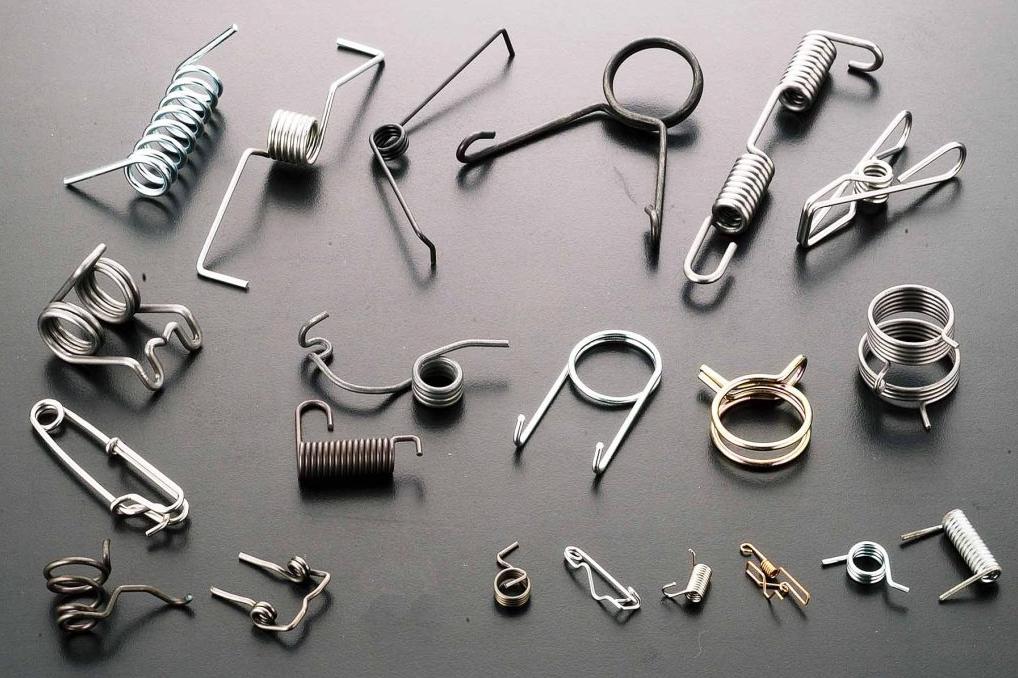
Materials Used for a Torsion Spring
Common Materials for a Torsion Spring
The choice of materials for torsion springs is critical as it directly impacts their performance and longevity. Various materials are used, each with its own set of characteristics and advantages. Some common materials include:
- High Carbon Spring Wire
High carbon spring wire is one of the most popular materials for torsion springs due to its excellent strength and resilience. It can withstand a significant amount of torque without permanent deformation. High carbon spring wire is cost-effective and readily available, making it a preferred choice for many applications.
- Music Wire
Music wire, a high-carbon steel wire, is known for its uniformity, high tensile strength, and durability. It’s often used in applications where precision and reliability are essential. The name “music wire” comes from its use in musical instruments, as it can produce clear and consistent tones.
- Hard Drawn Wire
Hard drawn wire, made from medium carbon steel, offers good strength and moderate elasticity. It is a suitable choice for applications that require both torsional force and flexibility. Hard drawn wire is commonly used in applications like garage door mechanisms.
- Alloy Steel Wire
Alloy steel wire combines the strength and durability of steel with additional alloying elements to enhance specific properties. These alloys can improve resistance to factors like corrosion and fatigue, making alloy steel wire suitable for demanding environments and long-lasting applications.
- Stainless Steel Wire
Stainless steel is known for its resistance to corrosion, making it an excellent choice for applications where the spring may be exposed to moisture, chemicals, or other corrosive substances. Stainless steel torsion springs are commonly used in marine and food processing equipment.
- Non-Ferrous Alloy Wire
Non-ferrous alloy wire, such as phosphor bronze, offers corrosion resistance and electrical conductivity. These springs are often used in electronics and electrical components where conductivity and non-corrosiveness are critical.

Properties of Torsion Spring Materials
The choice of material for a torsion spring should be based on its properties, as these properties will significantly impact the spring’s performance in a given application. Here are some key properties to consider:
Strength
Strength is a crucial property in torsion springs as they must withstand high levels of torque. Materials with high tensile strength, like high carbon spring wire and alloy steel wire, are well-suited for applications where strength is paramount.
Elasticity
Elasticity is essential to ensure that the spring returns to its original position after the torque is released. Materials like music wire and hard drawn wire offer good elasticity, providing reliable performance.
Fatigue Resistance
Torsion springs undergo countless cycles of twisting and untwisting. To ensure a long service life, materials with good fatigue resistance are preferred. Alloy steel wire and stainless steel wire, with their enhanced properties, excel in this aspect.
Corrosion Resistance
In applications where exposure to moisture, chemicals, or other corrosive substances is a concern, choosing materials with high corrosion resistance, like stainless steel wire, is essential to prolong the spring’s life and maintain its performance.
Temperature Resistance
Some applications involve extreme temperatures. Materials should be selected based on their ability to maintain their properties in these conditions. Alloy steel wire and stainless steel wire, for instance, exhibit good temperature resistance.
Factors to Consider for Selecting the Torsion Spring Right Material
Choosing the right material for a torsion spring is not a one-size-fits-all decision. It involves considering various factors to ensure the spring meets the specific requirements of the application. Key factors to consider include:
Load Requirements
The amount of torque or rotational force the spring will need to handle is a primary consideration. Different materials have varying strength levels, and selecting one that can comfortably support the expected load is crucial to prevent premature failure.
Operating Environment
The environment in which the torsion spring will operate is vital. Consider factors such as temperature, exposure to chemicals, and moisture. Springs exposed to harsh conditions may require materials with higher corrosion resistance and temperature tolerance.
Cost
The choice of material also depends on budget constraints. While materials like stainless steel offer superior properties, they may come at a higher cost compared to options like high carbon spring wire. Weighing the performance requirements against the budget is an essential step in material selection.
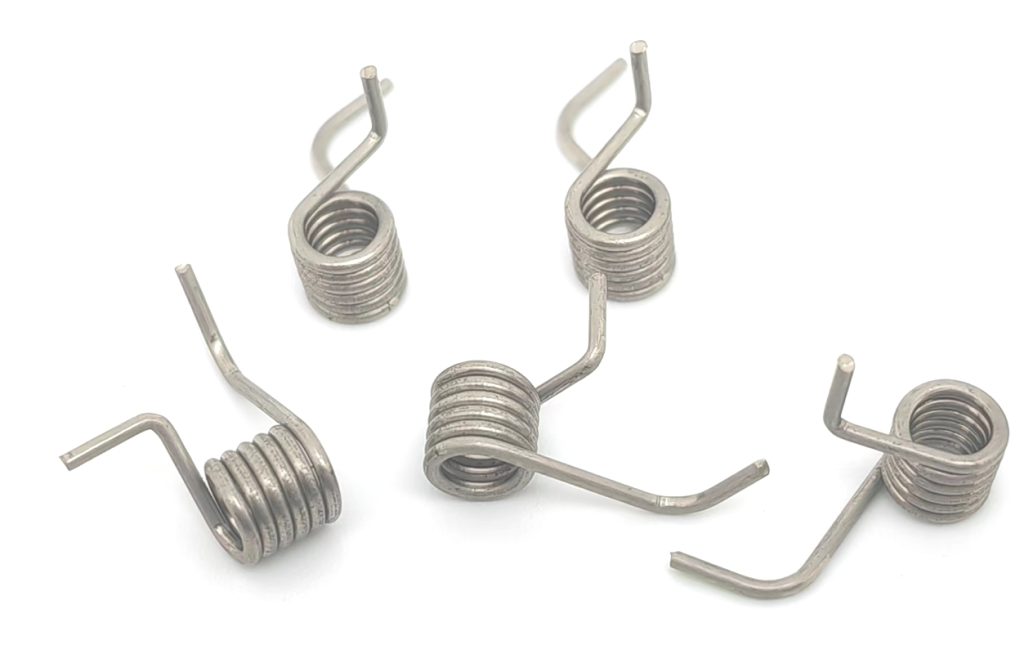
Conclusion
Torsion springs are the unsung heroes of the mechanical world, providing the necessary torque to keep machinery and devices running smoothly. Selecting the right material for a torsion spring is crucial to ensure it performs reliably in its intended application. By understanding the properties and considering factors like load requirements, operating environment, and cost, engineers and manufacturers can make informed choices and design torsion springs that meet the specific needs of their projects. Whether in the automotive industry, aerospace, manufacturing, or everyday household appliances, torsion springs quietly but effectively play a pivotal role in our daily lives.

